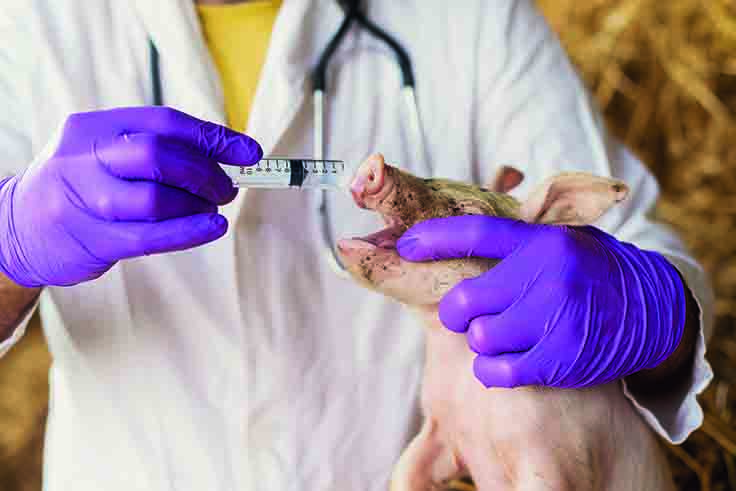New figures released through RUMA suggest the UK pig sector is making significant changes in how it stewards antibiotic use in at least one key area, with a halving in prescribed antibiotics administered in feed for young pigs.
National data collected from the UK’s major feed compounders indicate that at the beginning of 2014, 37% of all feed for young pigs contained a prescribed antibiotic; this had more than halved to 18% by the end of 2016. Two thirds of the reduction took place in 2016.
Paul Toplis from the Agriculture Industries Confederation said that the rate of reduction reflected work between vets and farmers to make courageous changes. “Reducing reliance on antibiotics to treat and prevent disease spread could pose significant welfare challenges if not done with the right levels of care and skill,” he said.
He added that some reductions appeared to have been made possible using zinc oxide, which when added to feed at medicinal levels can reduce the need for antibiotics in pigs by protecting the gut against E. coli bacteria.
Georgina Crayford of the National Pig Association said its NPA Antibiotic Stewardship Programme, launched last year, had helped drive behaviour change.
“Among the programme’s recommendations are the capture of usage data on pig units, benchmarking use against similar farms, and supporting strict limits on the use of critically important antibiotics,” she said. “We look forward to seeing the wider effects on use as data trends from the AHDB’s e-Medicine Book, also launched last year, start to come through later in 2017.”
John FitzGerald from RUMA, the independent agricultural and food industry alliance which promotes responsible use of medicines in farm animals, said the results indicated a wider industry commitment to reductions.
He said: “These data show there is a clear drive to use antibiotics more responsibly and to work alongside the human medical community in reducing, refining and replacing use of antibiotics globally – as well as building on the successful 10% reduction in UK farm animal use in 2015.”


